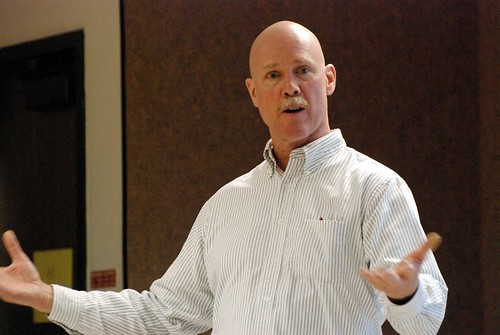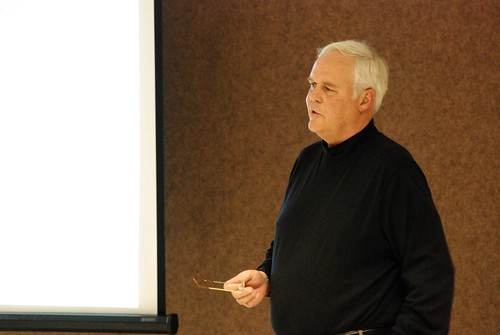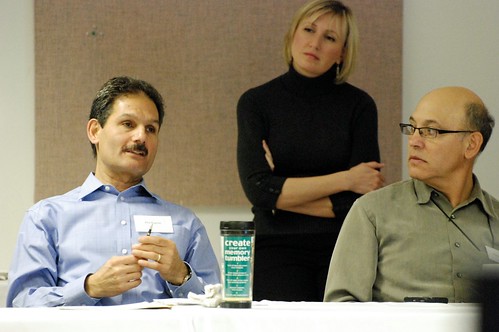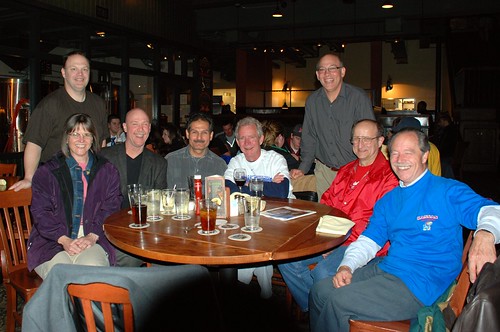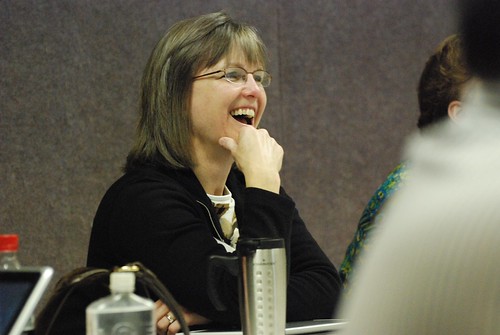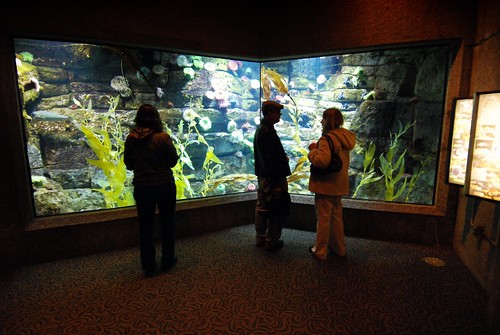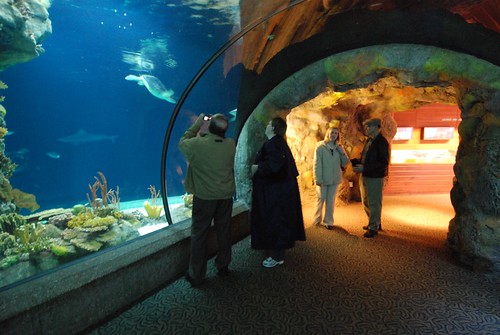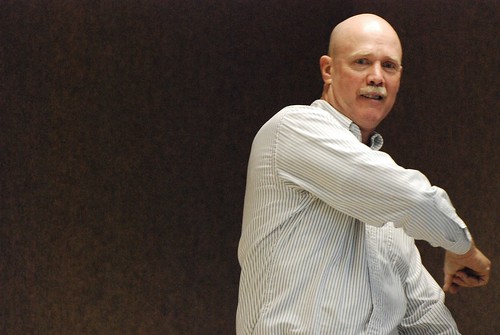[Post author: Wayne Duke]
Printing Industries of America is pleased to announce that Marilyn Jones, President and Owner of Consolidated Printing Company in Chicago, Illinois, is the recipient of the 2008 William D. Schaeffer Environmental Award. Established in 1990 and named for environmental pioneer and researcher Dr. William Schaeffer (1922-2003), the Schaeffer Award honors an individual who has made significant contributions towards environmentally sound practices in the printing industry. Dr. Schaeffer was widely known and respected for his ongoing environmental advocacy and leadership for the graphic communications industry.
Since the company’s beginning in 1973, Ms. Jones has taken steps to ensure that Consolidated Printing maintains its profitability while complying with local, state, and federal statutes and regulations; protecting employee health and well being; and operating as a good citizen of the community. The company mission is “to provide high quality printing services with a zero impact on the environment.”
Recognizing that printing is among the top ten most toxic industries in the U.S., Ms. Jones has focused her career on actively pursuing the elimination of toxic chemicals in the printing process. Consolidated Printing uses an all-natural process without toxic chemicals that are harmful to workers, the community, or air, land and water. In early years, common household products were substituted for harmful chemicals-cooking oil as a roller lubricant, vinegar as a neutralizer, and fabric softener as a wetting agent. Ms. Jones works with suppliers to eliminate harmful substances in chemicals and offers her shop as a willing beta test site for products that could potentially be safer for the environment. Today, Consolidated Printing uses an all-vegetable process, including inks, pigments and solutions, and the company is petroleum and carcinogen free.
In recognition of Consolidated Printing’s accomplishments and level of environmental sustainability, Ms. Jones has received awards from the Illinois EPA, three Illinois Governors, Chicago Mayor Richard Daley, and the Chicago Department of the Environment. In addition, Consolidated Printing has been asked to open a second location to provide the printing services at the Business Service Center for the Green Exchange, a retail and office facility that will house some 100 businesses, all of them environmentally and socially responsible. The first of its kind in the U.S., the Green Exchange building is a four-story, 272,000 square-foot former factory being converted according to LEED Platinum standards and incorporating a wide array of green building features and benefits.
Throughout her 35 years as a printer, Ms. Jones has used her own resources and initiative to ensure that others learn of the many ways a firm can print responsibly, honoring the environment as well as the health and well-being of the persons who produce printed product. She was involved in the development of the Great Printers Project, the first team in the nation seeking to create a business environment conducive to pollution prevention for the entire printing industry. Consolidated Printing became the first printing company in Illinois to achieve Great Printer status in 1997. The company then produced a film with the Illinois Environmental Protection Agency (IEPA), and Ms. Jones and other Consolidated Printing employees traveled the state with IEPA representatives to raise awareness of the Project among printers. Hoping to establish an “effective and easy to understand program for complying with OSHA regulations,” the Consolidated Printing staff also participated in a national OSHA project for the Illinois Department of Commerce and Economic Opportunity (DCEO). Working with several printing companies, Consolidated Printing formulated teaching materials to be utilized by printing companies across America in the National Pilot Project.
Ms. Jones works continuously to spread the word about sustainability and green in the printing industry. Outreach efforts include speaking engagements; educational and environmental committee involvement; exhibiting at a variety of facilities and events; participation on panels, blogs, You Tube and internet radio shows. Environmental sustainability in the printing industry has also been taught by Ms. Jones during weekly tours of Consolidated Printing for clients, printers, suppliers, associations, and radio and television crews, which have resulted in recent segments on Chicago’s WLS Channel 7, NBC Channel 5, and Good Morning America. She makes herself accessible to all who wish to learn of her pioneering practices.
The William D. Shaeffer Environmental Award is presented annually at the National Environmental Health and Safety (NEHS) Conference. This year’s NEHS Conference will be held March 16-18 in Indianapolis, Indiana.


